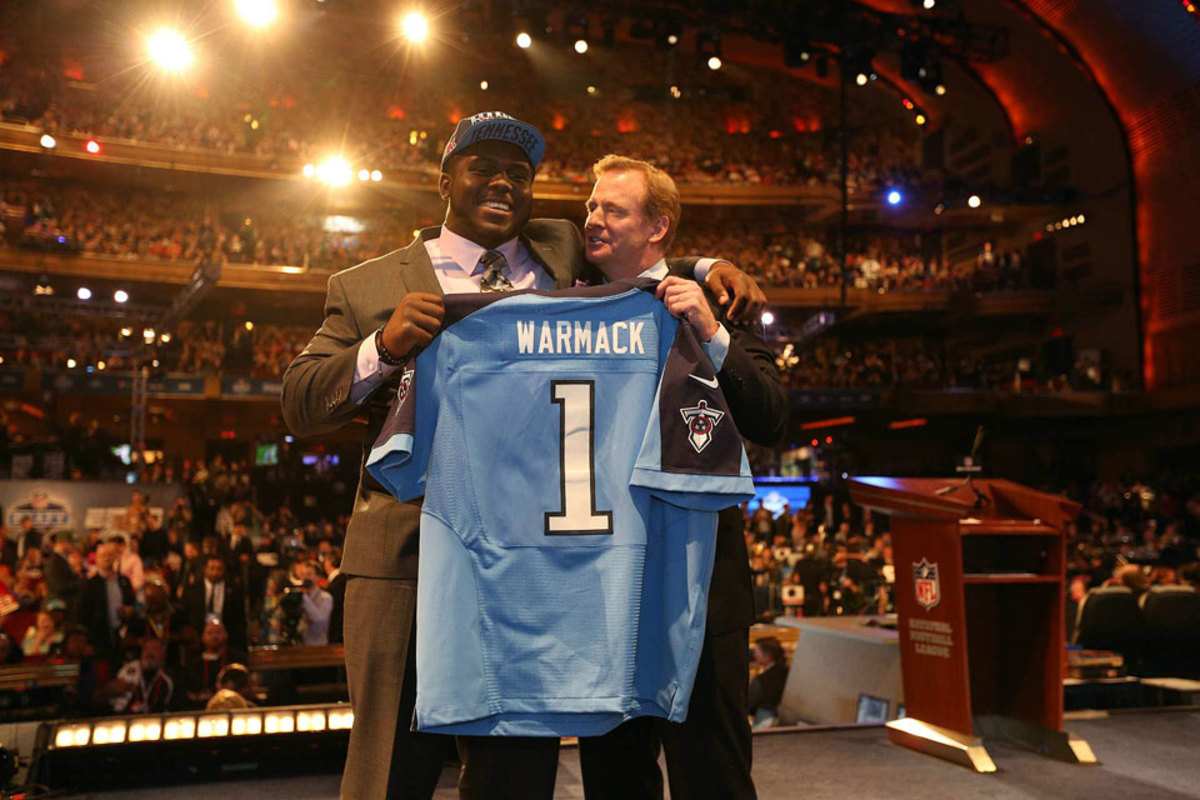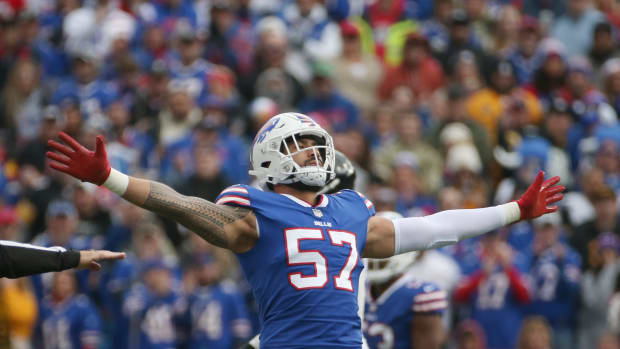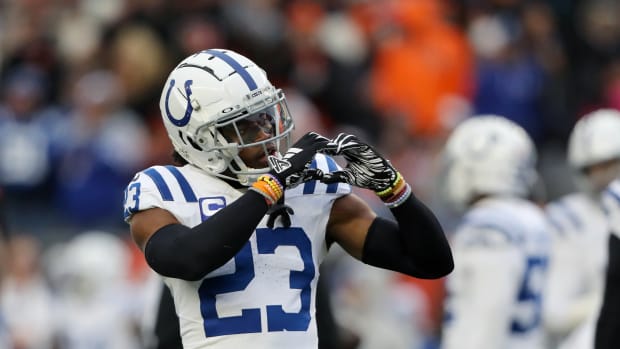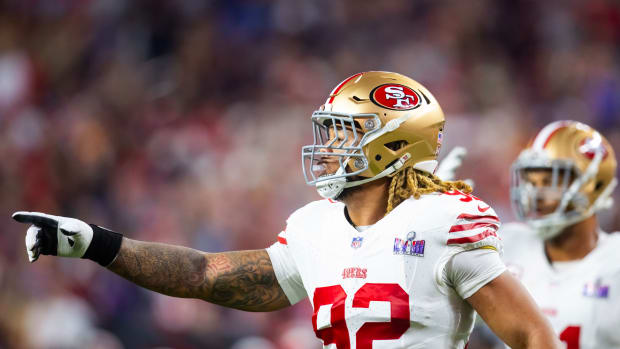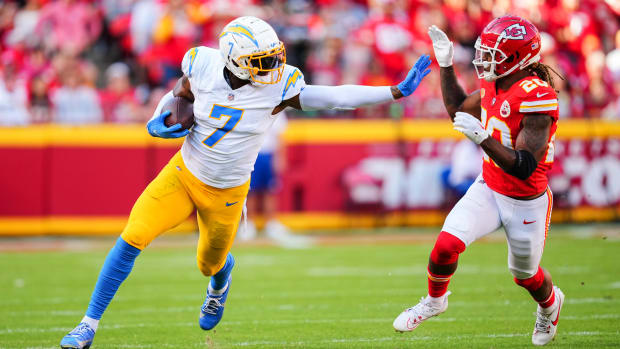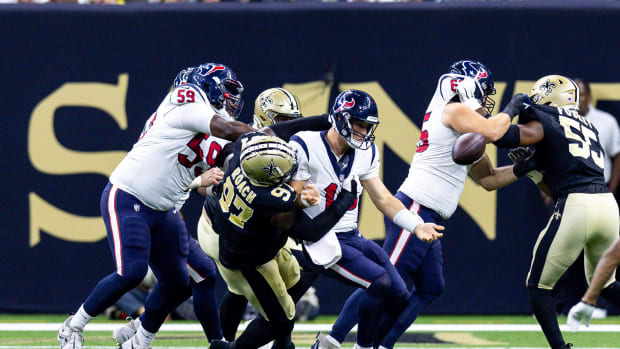Being an Agent is About More Than Showing Players the Money
In the inexorable march between an NFL prospect’s final collegiate game and his name being called during the draft, there is one person guiding him through the process: the agent. Although an agent’s money is made by negotiating the player’s contract, the six months preceding the draft—for which there is no designated compensation—are a crucial period for the player-agent relationship.
The agent is the gateway between the player and the various rungs of NFL decision-makers who will determine the player’s future. And although rookie contract negotiations are now largely predetermined by the new CBA, there are ways beyond the preset contract parameters for the agent to add value. Let’s examine.
Draft prep
Since my time as an agent 15 years ago, players have been committing to representation earlier and earlier. Now, virtually every player is committed by the time the college all-star games begin in mid-January. If one were to show up to the Senior Bowl without an agent, there would be blood in the water: dozens would descend upon him at every turn.
Once signed, agents immediately send players to a facility for full-time physical and mental combine preparation. Agents pay up to $25,000 to facilities like Athletes Performance Institute (API) simply to hold a slot years in advance; having such access is an important recruiting tool. All costs for training and preparation are shouldered by the agent, which often puts him in the red on players who aren’t drafted in the first two rounds.
Agents then follow the player to the combine, tracking his performance from a distance (they are not allowed in the workouts) and providing mental and emotional support. Following the combine, the agent sets a schedule in the run-up to the draft, punctuated by a workout for interested teams and usually with other draft-eligible players at their college facility.
In their dealings with players (and their families) prior to the draft, agents must strike the delicate balance of being upbeat and realistic about the player’s draft prospects. I have seen agents fired soon after the draft when guarantees of being selected in certain rounds were not met. On the flip side, there are times where an agent telling a client what he needs to hear rather than what he wants to hear can result in him becoming the player’s ex-agent. And of course, there is never a shortage of agents waiting to pounce on newly available clients.
Private eye
Coming out of Boston College, quarterback Matt Hasselbeck worked out for only one team, the Packers, and ended up being drafted by Green Bay in the sixth round. (Matt York/AP)
As we have seen this spring with prospects such as Johnny Manziel, Teddy Bridgewater and others, some highly rated players perform for scouts and coaches in private workouts, which are arranged by the agent in consultation with the respective schools. I remember assembling a private workout for a quarterback, though the circumstances were a bit different.
In 1998, I represented Boston College quarterback Matt Hasselbeck who, despite my lobbying to have him included, did not receive an invite to the combine. Thus, I thought it important to present Matt to all 32 teams and arranged a private workout at BC. I invited every NFL team, and I received a total of one RSVP to attend, from Andy Reid, then the quarterback coach of the Packers.
Although disappointed by the singular response, I saw an opportunity to spend quality time with Reid, so I offered to pick him up at the airport and drive him to the workout. I had never met Reid before and didn’t know about his considerable size before pulling up at Logan Airport in my sports car. To this day, we still laugh about wedging him into the passenger seat/back seat before setting off to see Matt’s workout.
Reid liked what he saw and shared his list of top three top three quarterbacks that year: Peyton Manning, Ryan Leaf and Matt Hasselbeck. I stayed in touch with Reid through that spring to keep Matt’s name front and center, and I prepared Matt for the possibility that Reid and the Packers presented the best—perhaps only—opportunity to be drafted. And that’s what happened; the Packers selected Matt in the sixth round, although Reid left a year later to become head coach of the Eagles. Peyton and Matt, relics from that 1998 draft, are still going. Leaf, well, not so much.
I do not know if my attention to Reid and continued follow-up helped Matt get drafted, but it certainly didn’t hurt. When I switched to the team side, working in the Packers’ front office, I always noticed agents’ vigilance—or lack thereof—on behalf of their clients, especially lower-rated players.
An advocate
The best agents advocate for players while earning the respect and trust of teams. Agents must know going in that teams always believe they have all the information they need about players, but they must also tactfully update their front office contacts with even slightly new information throughout the protract draft process: medical reports, training regimens, private coaching sessions, etc. Much like a young person trying to get a job, the agent must find the proper balance of being persistent without being a pest.
This is where relationships matter, often forged through the “infrastructure” of team management: assistant coaches, regional scouts, scouting coordinators and even secretaries. Many of today’s top agents skillfully sought out these contacts while championing lower-level players, developing a base of friendships with team employees who would eventually take on greater responsibilities within the organization or at other teams.
I would often ask the people in these roles with the Packers about the agents they encountered, and the answers were quite revealing. Some, they said, were courteous, respectful and always asked questions such as, “What else would you like to see from my player?” Others, sometimes even younger agents still establishing themselves, were dismissive and condescending, preferring only to communicate at higher levels of the organization. We duly noted those behaviors.
Trust
In the NFL, as in any business, people like doing business with people they like and, more importantly, trust. The NFL player business world is a small one; the same group of team executives and agents deal with each other over and over. Reputations, in both directions, become hard to shake.
Although many agents become delusional about their players, who can do no wrong, I respected agents that were realistic about their players. I would often ask them about their client’s weaknesses—though the responses always varied in degrees of honesty. I once asked an agent about his client’s known marijuana use, and he responded by saying, “What can I tell you, he likes weed. I’ve tried to get him to stop but no luck. I don’t think he’ll quit, but it hasn’t affected his performance so far.” While not the best endorsement of his player, I truly appreciated his candor more than that of another who, when asked the same question, answered, “C’mon Andrew, we all smoked pot in college.”
The business of football is about much more than numbers. It is about relationships. Honesty creates trust, and team-agent relationships are paramount.
Which leads to a burning question entering the 2014 draft …
“Can an agent manipulate the system to get a player drafted higher than he otherwise would be?”
Honesty from agents about players—“What can I tell you, he likes weed. I’ve tried to get him to stop but no luck.”—can lead to solid relationships with front offices.
The answer is no, but with a slight hedge. Let me explain.
Every team executive at some point over the years has rolled his eyes at agents (or the media, for that matter) for thinking they know more than the team does. Teams commit thousands of man-hours and millions of dollars toward the meticulous compilation of The Board. An agent is going to have a very tough time inserting himself into that process. But, of course, there may be much more subtle value-adds.
For example, teams often approach their pick and assess two or more evenly rated players. Several factors could make a difference at the moment of reckoning: positional need, character, medical history, level of competition and, yes, the agent.
Teams hope for long and productive careers with the players they draft, meaning multiple contract negotiations. If the team feels very comfortable with a certain agent or, uncomfortable with one, who the agent is can make a difference. I have seen it happen and still hear of it happening every year.
Silence
A final note: when I reached out to a few agents to discuss this, including some representing “hot” players who are said to be moving up the rankings, all of them politely declined to speak on the record. With the full-blast draft scrutiny, agents are paranoid about teams seeing anything that could negatively affect their client. There now seems to be fear among agents to not give the impression that they are even trying to outsmart teams. As one agent representing a top prospect told me, “Anything I say will come across contrived and artificial talking about how we try and influence. Nobody likes the sleazeball agent who tries to manipulate.”
Despite this rare reticence from agents to discuss their work, there may be no more important time in the player’s first four years (the length of his rookie contract) than now. He is the nexus between the 32 NFL teams and the player, his family and other interested parties. So when we see the player hug the agent when his name is called sometime between May 8-10, know that the agent has earned that embrace.
































